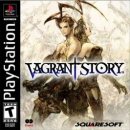| RolStoppable said: I know TP, trust me. I just forgot to talk about it in my post after I mentioned it. The problem of TP's overworld isn't that you can't get around fast enough, because there are like 15 warp points scathered across the map. The problem is that all that huge space is so empty, so... meaningless. Why is there so much landscape for the (almost) sole sake of sightseeing? Why does Zelda need such a scale? Probably to wow the player, but on subsequent playthroughs that feeling isn't really there anymore unless it has been years since you played it the last time. Yes, tell me why you think that PH and ST are so different. |
I forgot how many times you tend to replay games, forgive my presumption. Though I don't see the problem if the field is there for your perusal, and you don't have to experience it if you don't want: but if you do there are monsters and horseback fights and all sorts of neat things you can do if that's what gets your goat.
Anyway. You may not like the PH and ST answer, because the answer is accessibility.
The thing about PHST in comparison to, say, Link's Awakening, is that they're engineered to be playable by anyone, and there's small - if any - possibility of getting lost. The geography of Link's Awakening was set up in such a way that finding your way to a place was a challenge in and of itself (I spent a long time trying to get to a certain place in Tal Tal Heights, if I remember). This isn't a bad thing depending on your value set, what you're looking for in a Zelda game, but for a lot of gamers it's terrible. My mother wouldn't want to spend hours searching for a particular path in frustration, she'll want to get to "the good part" immediately, or at least know where she has to go to get to the good part. That's the point: if you want to go somewhere in Spirit Tracks, you either can or can't, and it's possible to tell at a glance. If you can't, you enerally know where you need to go to unlock it, and if you can, all you need is enough time to hop in your train and go.
If you ignore the dichotomy of overworld vs. town/dungeon here (I love driving the train, though not so much the boat in Phantom Hourglass), then all it does is place emphasis on the part that some people enjoy more: the ability to get where you want to go to do what you want to do. You can explore the overworld by unlocking new sections of track, but you never get lost.
Is it good? Well, not universally. But it's elegant, for what it is.

















